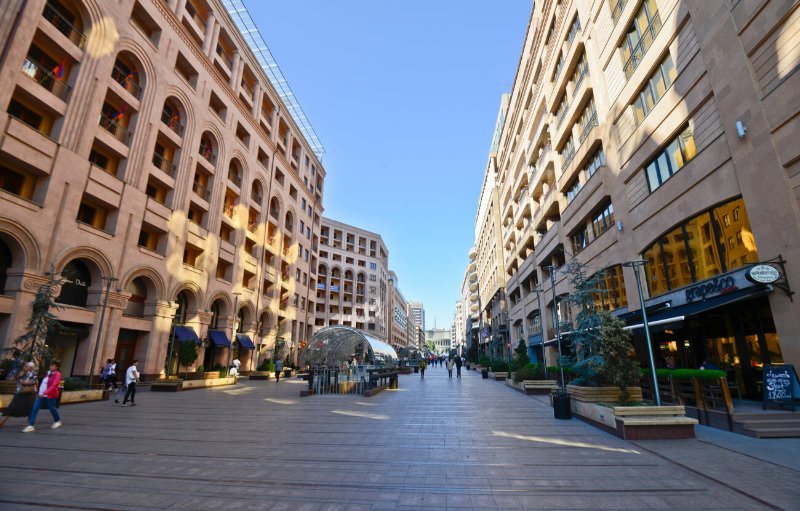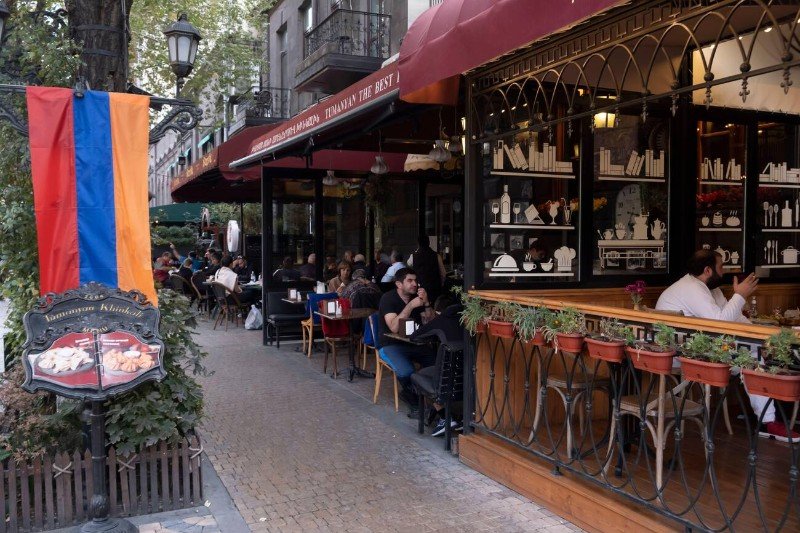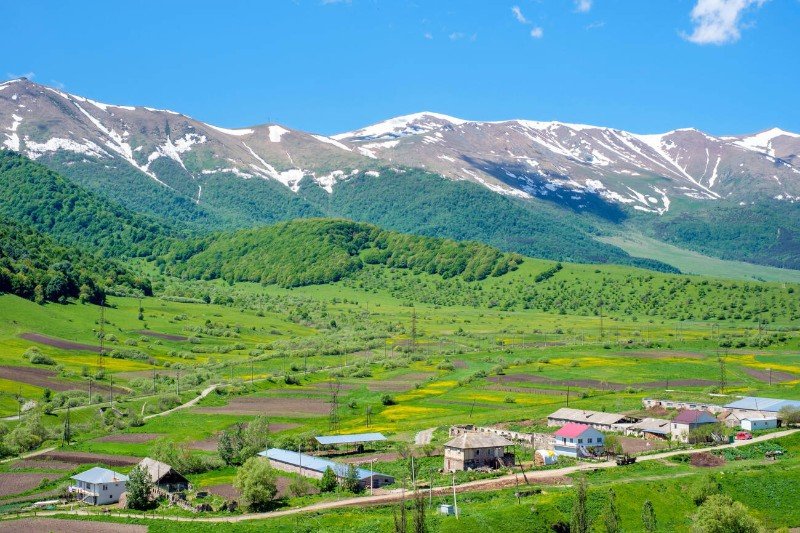Northern Avenue is a central pedestrian street in Yerevan, Armenia. It stretches diagonally between the two most significant squares of the city: Republic Square and Freedom (Opera) Square. Thanks to this strategic connection, the avenue is one of the busiest and most energetic areas in Yerevan, especially in the evenings. So follow us to know more about this modern part of the city!
Northern Avenue’s Historical Roots

The vision for Northern Avenue dates back to 1924, when legendary Armenian architect Alexander Tamanyan designed Yerevan’s first master plan. His goal was to create a north-south urban axis, linking key areas from the railway station to Komitas Avenue. A key element of this plan was a wide street linking Yerevan’s cultural and administrative centers.
However, this idea didn’t materialize during Tamanyan’s lifetime. Various efforts to develop the avenue occurred over the years, including competitions in the 1960s and later decades. But it wasn’t until the early 2000s that serious construction began.
The Visionary Alexander Tamanyan

Alexander Tamanyan was a well-known Armenian architect and urban planner who played a pivotal role in shaping modern Yerevan. His 1924 master plan laid the foundation for the city’s transformation from a provincial town into a modern capital. Tamanyan envisioned a structured layout featuring wide avenues, public squares, and green spaces, an idea far ahead of its time. Northern Avenue was one of the key components of his urban design, aimed at connecting Yerevan’s cultural and administrative hubs. Although he didn’t live to see it completed, his influence remains central to the city’s architectural identity. Today, his statue stands at the base of the Cascade Complex, honoring his lasting legacy in Armenian architecture.
Construction of Northern Avenue

The final concept was introduced by Narek Sargsyan, the city’s chief architect, in 2000. The Armenian government approved the plan, and construction officially began in 2001. Northern Avenue was officially opened on November 16, 2007.
The avenue spans approximately 450 meters in length, 27 meters in width, and covers around 9.8 hectares. It includes 11 multi-purpose buildings, blending residential units, business centers, and hotels. The average building height is 9 floors, and the design integrates local natural stone, offering durability and a connection to Armenian heritage.
Daily Life and Culture on Northern Avenue

Northern Avenue isn’t just about architecture, it’s a lifestyle hub. By day, it’s a business and shopping center. Top international and local brands have boutiques here, alongside mobile network service stores and corporate offices.
In the evening, the avenue transforms. Cafés, restaurants, and street performers bring the area to life. Visitors enjoy outdoor dining, strolls, and the dynamic ambiance of a modern city center. It’s a popular place to combine leisure and business, and it takes only a few minutes to walk from one square to the other.
Attractions Around Northern Avenue

Northern Avenue is ideally located in the heart of Yerevan, giving tourists quick access to many top attractions within walking distance. Just a few minutes away is Republic Square, where visitors can explore the History Museum of Armenia and the National Gallery. Head the other direction, and you’ll reach Freedom Square, home to the Yerevan Opera and Ballet Theatre. Cascade Complex, a massive staircase featuring contemporary art, panoramic views, and the Cafesjian Center for the Arts, is just a short walk north. Nearby, tourists can also discover Abovyan Street, known for its cozy cafés and bookstores. With so much to see within a short radius, Armenic Tours recommends planning at least half a day to explore the central Yerevan area around Northern Avenue.
Underground Shopping on Northern Avenue

In addition to its surface-level boutiques and stores, Northern Avenue also offers a network of underground shopping areas. These spaces include a mix of retail shops, mobile service providers, banks, and cozy cafés, providing visitors with convenient, year-round access to essential services and local products. The underground sections are especially useful during extreme weather, offering a comfortable environment for shopping and relaxing.
Local Perspectives on the Avenue
When construction began, many Yerevan locals were skeptical about the style and planning of the new street. Critics raised valid concerns about urban design and architectural consistency. However, over time, Northern Avenue gained popularity.
Today, despite some resistance from older residents, it’s considered a symbol of modern Yerevan, similar to how Parisians once resisted the Eiffel Tower, which is now France’s most recognized landmark.
A Modern Icon in a Historic City

We offer visitors a chance to experience this remarkable location firsthand. Northern Avenue represents how Yerevan has evolved: blending history, culture, and urban development. While many parts of the city showcase ancient traditions, this avenue showcases Armenia’s future.
Conclusion
Northern Avenue in Yerevan stands as a testament to visionary urban planning, connecting the city’s rich past to its modern ambitions. Its history is rooted in the ideas of one of Armenia’s greatest architects, and today, it flourishes as a vibrant space full of life, culture, and activity. Whether you’re looking for business opportunities, luxury shopping, or simply a place to enjoy the city, we invite you to walk this unique street and witness Yerevan’s transformation.
FAQ
What is the significance of Northern Avenue in Yerevan
Northern Avenue is a major pedestrian street that links Republic Square and Opera Square. It's a cultural, business, and leisure hub with shops, restaurants, and historical relevance.
When was Northern Avenue in Yerevan built
Construction began in 2001, and the avenue officially opened on November 16, 2007, based on a plan initially proposed in 1924 by architect Alexander Tamanyan.
What can visitors do on Northern Avenue
Visitors can shop at high-end boutiques, enjoy local and international cuisine at cafés and restaurants, watch street performers, and experience Yerevan’s modern lifestyle, all within walking distance of key city landmarks.





